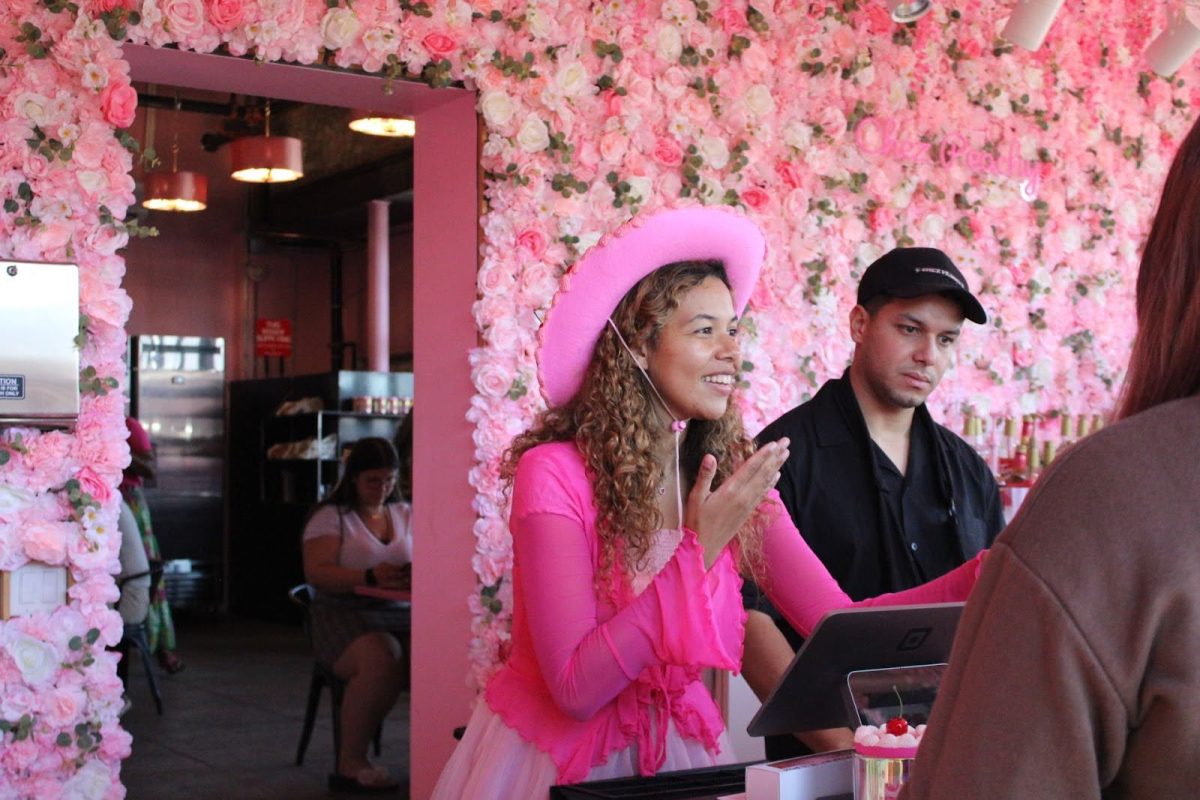Most women here at the UA, including me, grew up with them. Now, a new generation of girls goes wild for them. Their ability to sing duets with forest animals and generate revenue is not to be underestimated.
They’re the Disney Princesses, of course. Their first member dates back to 1937, and since then Native American, Middle Eastern and Chinese princesses have joined the gang. But so far, not one of the Disney Princesses has been black.
Enter Maddy (coming to theatres in 2009).
Why did it take 70 years to produce a black princess? Only Disney knows, but I have the feeling Maddy’s present emergence has something to do with Disney’s problems with its recently renamed animation division, which include financial losses; a chain of closed studios; and a lack of direction over investing in traditional versus computer animation.
So Maddy’s a marketing ploy: “”Black princess! Everyone pay attention!””
Well, we’re so long overdue for a black princess that maybe it doesn’t matter how she came to be. I can’t know how it feels to be a black little girl, but I should think it would feel awful to watch princess movie after princess movie and never see a princess that looked like me – as if I didn’t exist in Disney’s world, or as if black women couldn’t be princesses.
Of course, as the first black Disney Princess, Maddy has a lot of responsibility to bear on her pretty shoulders. From what I’ve seen on the Internet, the black community, while glad to see the creation of a black Disney Princess, is not overly pleased with her.
The film’s New Orleans setting, complete with voodoo, is objectionable for some. The title of the film, “”The Frog Princess,”” leads others to fear racist undertones with frogginess, because the frog princess traditionally sheds and burns her skin. The fact that Maddy’s prince is described as “”European”” leads to questions about his ethnicity and the can of worms therein.
Ashley Emerole, a sophomore majoring in political science and regional development, has similarly ambivalent feelings:
Recalling her own exclusion from a princess role on the basis of her race, she sees Maddy as a “”milestone,”” although “”the fact that the story takes place in the South and will rely on voodoo and other African-American stereotypes is a problem.””
I can understand how the black community would be wary of The Walt Disney Company after those 70 years in which the existence of black people in the Disney universe consisted of “”Song of the South.””
On the other hand, the issue’s so fraught with tension that it’s hard to see how Maddy could win this one. If the film has connections to voodoo and New Orleans, that enforces a stereotype. On the other hand, if Maddy were a “”traditional,”” European-type princess, that would seem insulting to black heritage, too. Perhaps the solution would be some kind of third option: Princess Maddy of the future, who wears silver lamǸ and rules over a nation that doesn’t exist yet.
In the end, only time can tell whether Maddy will be mostly a positive influence or a negative stereotype.
But I do think – provided Disney manages not to completely botch the idea – Maddy will be an especially good thing for those of us who aren’t black.
Why’s that? Well, when people watch a film, even a Disney movie, we start to identify with the protagonist. We’re rooting for her, and she becomes a proxy for us. Any woman, who, as a child, watched Cinderella take her first steps into the ballroom will tell you that she, at least once, pretended that was her.
When a little girl has identified in this way with a character who doesn’t look like her, it helps to take away the character’s “”other-ness.”” Princess Jasmine’s defining characteristic isn’t that she’s Middle Eastern. I think of “”Colors of the Wind”” when I think of Pocahontas, not of the fact that she’s Native American. As little girls, we remember them primarily for being princesses.
And maybe that influence will extend beyond the realm of animation. I hope that one day the American public can be smart enough to see a poster for a film starring a black person and not automatically think, “”Ah, that film’s only for black people.”” I hope that one day newspapers won’t keep running stories about whether black presidential candidates will get the black vote, as if the color of a person’s skin automatically made him or her represent everyone else of the same color. Maybe Maddy will take us just a few steps closer to that reality.
It’s too early in the game to say what “”The Frog Princess”” will really be like when it opens in 2009. The only thing we can’t say is that it won’t be important. The things that we see as children shape us for our entire lives. They teach us how to think, tell us what’s normal and show us behavior to imitate. With any luck, the influence that “”The Frog Princess”” has on all our little girls will be a positive one.
Now, as to the depiction of women in Disney movies … well, that’s another column.
Lillie Kilburn is a psychology sophomore. She can be reached at letters@wildcat.edu








